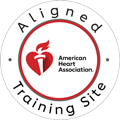When a cardiac arrest occurs, timely and effective CPR can mean the difference between life and death. According to the American Heart Association (AHA), high-quality CPR can double or even triple the chance of survival for someone experiencing a cardiac arrest outside of a hospital. While this statistic is sobering, it highlights the vital importance of knowing how to perform CPR correctly. For residents in Tampa, CPR Classes Tampa stands as a trusted provider of life-saving training, offering courses that empower individuals to respond confidently in emergencies. This article delves into the core components of effective CPR and explains why proper training is essential.
Why CPR Matters
Cardiopulmonary Resuscitation, or CPR, is an emergency procedure performed when the heart stops beating. The primary goal of CPR is to restore blood circulation to the brain and other vital organs, buying crucial time until professional medical help arrives. Without prompt CPR, brain damage can begin within minutes, and the risk of death increases exponentially.
Effective CPR has a powerful impact on outcomes. For instance, research shows that bystanders who administer CPR promptly can significantly improve survival rates and increase the chances of a favorable neurological outcome for the patient. Real-life examples of CPR’s importance include stories of individuals who have survived cardiac arrests due to immediate action by a passerby or family member. From sudden heart attacks at home to athletes collapsing on the field, CPR can save lives in a variety of emergency situations.
Call Us Now
Get the Best CPR Class in Tampa Today!
Core Components of Effective CPR
The success of CPR relies on a precise combination of techniques. Understanding each component ensures that the procedure is carried out effectively.
Chest Compressions
The cornerstone of CPR, chest compressions help maintain circulation by manually pumping blood through the body. Proper hand placement is critical—place the heel of one hand on the center of the chest, just below the nipple line, with the other hand stacked on top. Compressions should be delivered at a depth of at least two inches (5 cm) for adults, and at a rate of 100–120 compressions per minute. Equally important is minimizing interruptions to maintain consistent blood flow. Compressions should be continuous, with pauses only for necessary rescue breaths or to use of an AED.
Airway Management
Ensuring the airway is open is essential for delivering rescue breaths. The head-tilt and chin-lift maneuver is the most effective method. This technique involves tilting the head backward to open the airway while lifting the chin upward. This action helps prevent the tongue from obstructing the throat, making it easier to deliver breaths effectively.

Rescue Breaths
Rescue breaths supply oxygen to the lungs and should be delivered at the correct volume and frequency. For adults, the ratio of chest compressions to breaths is 30:2. Each breath should last approximately one second and result in a visible chest rise. The goal is to avoid excessive ventilation, which can lead to complications such as stomach distension. Synchronizing breaths with compressions ensures optimal oxygenation without disrupting blood flow.
Use of an Automated External Defibrillator (AED)
An AED is a critical tool for restoring a normal heart rhythm during cardiac arrest. Understanding when and how to use an AED is crucial for effective CPR. When an AED is available, it should be used as soon as possible. The device will provide voice prompts to guide the user through the process, which typically involves attaching the electrode pads, analyzing the heart rhythm, and delivering a shock if needed. This quick intervention can greatly increase the chance of survival.
Team Dynamics in CPR (for healthcare settings)
In hospital and healthcare scenarios, CPR is often performed as part of a team. Effective communication and clear role delegation are vital to ensure that each member contributes to the process efficiently. This teamwork allows for uninterrupted compressions, proper ventilation, and swift use of advanced tools like AEDs and medications.
Common Mistakes to Avoid
While CPR can save lives, it’s not uncommon for well-intentioned responders to make mistakes. Some of the most frequent errors include shallow compressions, which fail to effectively circulate blood, and over-ventilation, which can reduce blood flow to the heart. Poor hand positioning or uneven compression depth can also compromise the effectiveness of CPR.
Hands-on training at CPR Classes Tampa can help overcome these challenges. By practicing in a controlled environment with expert guidance, individuals learn to apply proper techniques and gain the confidence needed for real-life emergencies.
The Role of Training in Mastering CPR
Effective CPR is a skill that benefits greatly from practice. Hands-on learning allows individuals to experience the motions and techniques, embedding them in muscle memory for future use. Practicing CPR in a realistic yet low-stress setting helps build confidence and ensures that individuals know what to do when the stakes are high.
Training also fosters a deeper understanding of CPR, making individuals more prepared to handle emergencies with clarity and poise. CPR Classes Tampa offers various courses that cater to different needs, including BLS (Basic Life Support) for Healthcare Providers, ACLS (Advanced Cardiovascular Life Support), and PALS (Pediatric Advanced Life Support), as well as CPR and First Aid certifications. Each course provides practical, actionable skills that can be used to save lives.
Why Choose CPR Classes Tampa?
CPR Classes Tampa is committed to providing high-quality, evidence-based CPR training that meets the standards set by the American Heart Association (AHA). This certification guarantees that participants are learning from a curriculum grounded in the latest medical research and best practices. Classes are designed to be convenient and stress-free, with hands-on practice and expert instruction tailored to fit both beginners and experienced responders.
What sets CPR Classes Tampa apart is its reputation as the premier CPR training provider in the area. Whether you’re a healthcare professional or simply a concerned citizen, the courses offered will equip you with the knowledge and skills needed to respond effectively in an emergency.
Conclusion
Don’t wait for an emergency to realize the importance of CPR training. Take the first step toward being prepared and capable of saving a life. Sign up for a CPR course at CPR Classes Tampa today and gain the confidence to act when it matters most. For more information, visit [insert registration link or contact information].
Understanding the components of effective CPR is crucial for anyone who wants to be prepared to handle emergencies. Proper training, such as that offered by CPR Classes Tampa, ensures that individuals are equipped with the skills needed to perform CPR effectively and confidently. By taking the time to learn and practice these life-saving techniques, you’re not just gaining knowledge—you’re making a difference in your community and contributing to a safer world.


